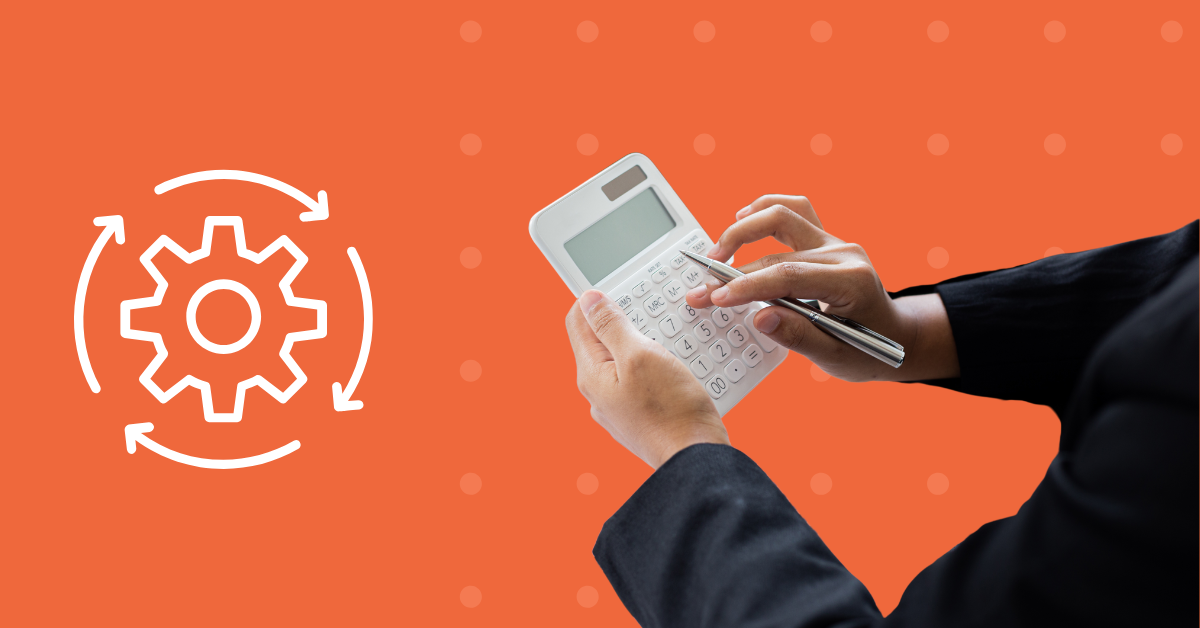Late payments are one of the biggest challenges to steady cash flow and predictable revenue for businesses. Although you may do your best to stay on top of invoicing and billing, outstanding accounts receivables ultimately hinder your profitability.
It may seem like a never-ending cycle: reaching out to customers, waiting for a response, being told you’ll receive a payment, then waiting for money to come through. Then there is the expensive and lengthy collections process, which can cost your business thousands.
While you can’t guarantee every client will pay on time, you can transform how your business handles late payments with cutting-edge solutions.
The impact of late payments
When your business is profitable, you may not think a few late payments really affect your bottom line. However, think about the difference between your largest account paying late and your smallest. Not so insignificant now, right? Treating every client the same when it comes to late payments isn’t effective; you have to segment your consumer base to save time and money on collections.
Late payments prevent your business from reaching its objectives. It can also reflect poorly when you’re presenting figures to stakeholders. Companies that want to scale need consistent cash flow and predictable revenue streams. No matter how solid the rest of your operations are, if you don’t have a strategy for reducing late payments, then you’ll stagnate.
The goal of this article is to offer you strategic solutions to boost receivables management, fuel cash flow optimization, and promote greater cash flow forecasting accuracy.
Exploring cutting-edge receivables solutions
Staying ahead of the curve is paramount in today’s business world. There are always new tools emerging to help you manage your business faster and more efficiently. When it comes to better receivables management, you have many options at your disposal to find a customized solution that works for your company.
Accounts receivable automation software
Invoicing should be automated. There is seldom time for a busy organization to manually review every account and reach out personally to collect late payments. Automating your invoicing and payment process is one of the most technologically smart financial stability strategies for modern businesses.
Companies that adopt AR automation for more than 50% of their processes see an average 32% reduction in Days Sales Outstanding (DSO). At least 37% of businesses that generate over $1.5M annually have adopted AR automation, and 85% of CEOs at these businesses cite automating receivables management as one of the key drivers in DSO reduction.
Companies that adopt AR automation for more than 50% of their processes see an average 32% reduction in Days Sales Outstanding (DSO)
In addition to streamlining your payment processing, automation also helps reduce errors and ensure accuracy. While it does take time to adapt to automated AR workflows, their integration can be a highly successful way to reduce DSO and improve payments, even among clients who have a history of paying late.
Predictive analytics tools
A predictive tool uses AI analytics and machine learning technology to forecast individual customer payment behavior, then help you determine the best way to approach collections. You can, for example, have a process for working with customers who pay on time, those who are often late, and those who never pay on time.
Predictive analytics analyze factors such as historical payment data, customer demographics, and market trends to help you anticipate payment delays and tailor payment terms based on probable risk factors.
Chaser offers predictive analytics to help you maintain steady cash flows and avoid losing money. As technology continues to improve, analytics tools will help businesses forecast their finances with greater accuracy and make more calculated decisions with their accounts.
Customer self-service portals
Giving people the ease and convenience of making payments from their mobile phone or laptop can dramatically increase timely payments. In today’s app-driven society, we’re all familiar with self-service payment portals. They make life simpler, streamline our routines, and make it a breeze to pay anything we owe.
Businesses that rely on traditional billing measures may be more likely to fall behind; they are prone to lengthy collections processes that can take weeks, if not months, to resolve. But imagine having reminders sent to a client with a link to a portal that lets them pay in seconds.
Self-service solutions not only encourage customers to be more proactive with their payments; they also collect payment data automatically and make it easier for your business to maintain its AR records.
Tips for implementing receivables solutions
While these options offer successful receivables solutions, successful integration takes careful planning to unlock their full potential. Here are some strategies to help you get the most out of your refined receivables management:
- Compare products. There are many services available that all offer the same thing. But what makes a provider stand out? Is it their integration with current software you already use? Exciting new features like predictive analytics? Mobile compatibility? Make a list of features you’d like to have in your AR solutions, so you can find a provider that checks all your most important boxes.
- Train your staff. Conduct training sessions to ensure everyone involved in payments processing is comfortable with the new tools. In addition to a general onboarding session, offer individual coaching as needed based on people’s individual roles. This will help them master their new tools of the trade and maximize their benefits for your business.
- Measure your KPIs. Keep track of your key performance indicators (KPIs), such as DSO, aging receivables, and customer satisfaction before and after you integrate new solutions. Leverage this data to gain actionable insights into how your solutions are performing, what benefits they bring, and what challenges you need to prioritize going forward.
- Optimize, optimize, optimize. Once you have implemented a new solution, keep finding ways to improve it. Think of the technology as a foundation for you to build on. Improving one facet of your AR management can lead to other breakthroughs that further improve payments, boost collections efficiency, and accelerate your cash flow.
What can you automate with accounts receivable software?
Accounts receivables automation can help you create and schedule invoices, collect and process payments, send automatic payment reminders, reconcile accounts, and collect and organize AR data.
Teams that implement AR automation can reduce stress, improve efficiency, and glean greater wisdom about their management practices to drive their business forward. More importantly, they can identify areas where they may need to improve their processes to increase customer engagement and satisfaction.
Benefits of implementing receivables solutions
Receivables automation tools give you a wide range of benefits, such as:
- Enhancing cash flow forecasting accuracy
- Improving invoice management
- Reducing data entry errors and oversights
- Allocating team members for more rewarding work
- Improving customer relations by offering more timely, professional interactions
- Improving payment efficiency through automatic reminders
- Optimizing data and clarifying KPIs for improved decision-making
By streamlining your receivables management, you can spend less time calculating DSO, billing, and collections to focus on late payment recovery. Because payment issues can arise for a number of reasons, you need reliable solutions to stay consistent with your customers. Even though there are many moving parts at play, receivables automation tools will help you continue to provide responsive service.
How to choose the right receivables solutions for your business
First, assess your business’s needs. Do you want to automate your entire payments process, or just a part of it? How many accounts do you manage, and how many do you anticipate having within 12 months? A good software solution will be able to support your business now and scale with you seamlessly.
Consider factors like your current invoicing schedule, payment frequency, and customer demographics. Then, identifying goals — reducing DSO and increasing collections rates are the most common. This will help you frame your search as you compare tools on the market.
Next, book demos with your top providers to get a feel for what they can do for your business. Avoid purchasing and integrating any software you haven’t demoed first. This can save you a lot of headaches and frustration in the future. During a demo, you get to see a solution in action and offer questions to learn more about how it can improve your unique situation.
You should also develop an integration schedule for any software you’re considering. Some are easier to adopt than others, and you should be well aware of how changing payment processes can impact your operations and customers. You may even want to send out notification letting your clients know that your business is adopting a new software and how it will impact them going forward.
For businesses integrating a client self-service payment portal, be sure to offer ample guidance after your portal is integrated. Don’t simply expect clients to go through and make a payment. Offer a helpful video along with a written guide to explain exactly how to navigate the new platform step by step. Most importantly, show customers how this portal is a valuable tool for them.
Potential challenges
Integrating new technologies into any business doesn’t come without risks. When you’re considering new receivables tools, you have to be wary of potential downsides or obstacles you may face, including:
- Costs. The monthly or annual cost of the software could be expensive, and it may be particularly difficult to budget for if you’re already struggling with a high DSO and many late accounts. Be sure to think about the ROI a platform can provide before going all-in.
- Increased technological needs. You may need to upgrade hardware or purchase additional software depending on the current age and abilities of your set-up. The additional cost of expanding technology also requires downtime to familiarize yourself and your staff with all the new features.
- Data management. Implementing data into a new system can be cumbersome, and you’ll need sufficient time to ensure that all your ARs are transferred into your automation tool properly.
- Lack of support. Be sure to carefully explore the level of customer service your receivables solutions provider offers. It’s always best to go with a company that gives you a dedicated account manager and technical support.
Navigating these challenges is possible with research and preparation. The better you understand your own needs, the easier it is to find a company that meets them.
Explore a receivables automation tool today
It can feel daunting implementing an automation tool, but the benefits you stand to gain make it worth all the effort. You can use an accounts receivable automation tool like Chaser to improve your payments process and boost your cash flow.
Are you ready to learn more? Book a call to schedule a demo. You can also dive in and try Chaser with a free 10-day trial.




